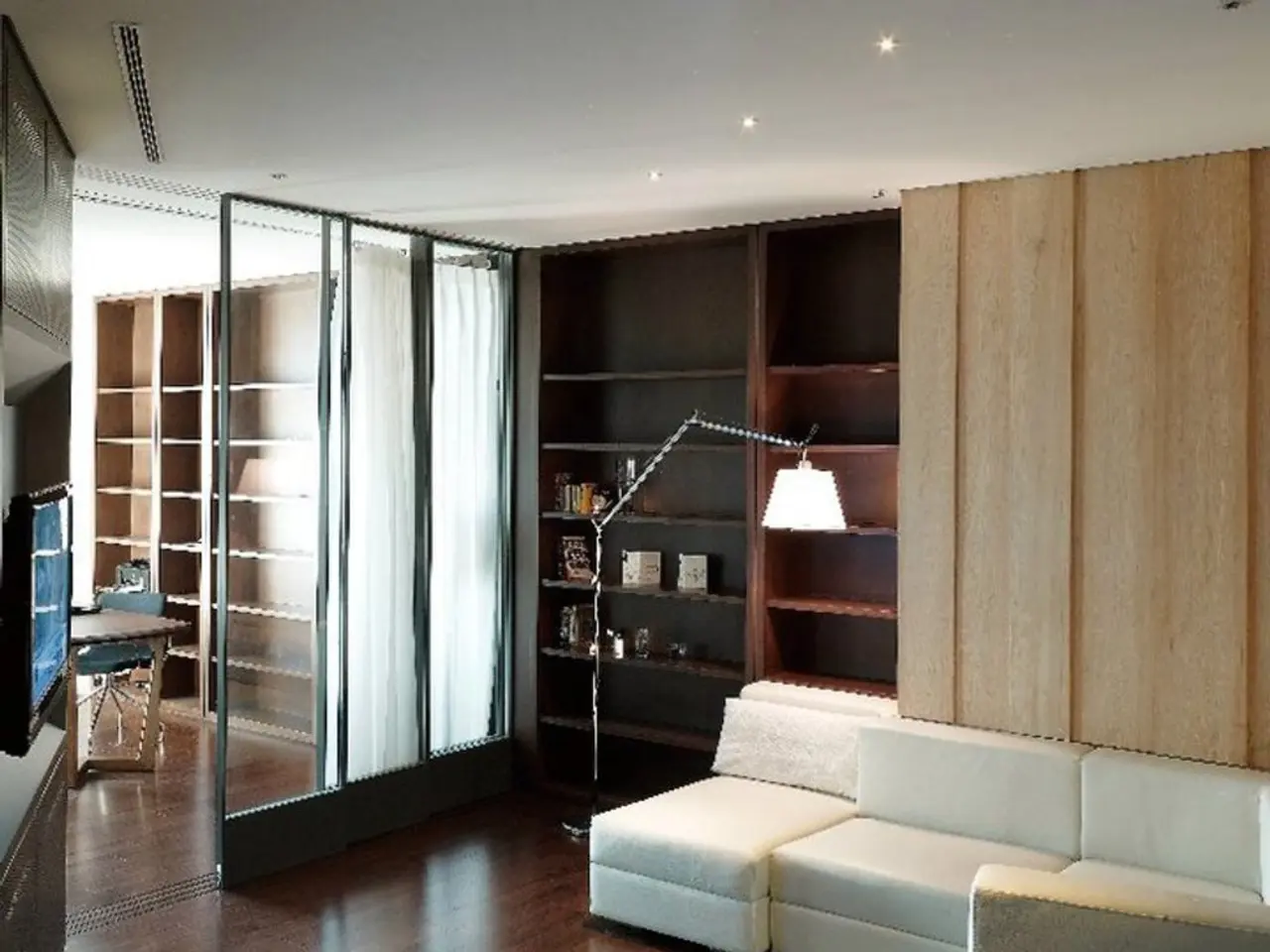Expanding a Living Room's Perceived Space
In a bid to make your living room feel more spacious, focus on maximizing natural light and adopting open, light-reflective color palettes. Here are some key strategies to achieve an airy, larger feeling living room.
Natural light is your ally in creating a spacious living room. Large windows or glass doors bring in ample natural light, visually connecting the interior with the outdoors and making the space feel less confined. The arrangement and design of a room can significantly affect how one experiences space, beyond just its physical dimensions.
To increase the sense of openness and brightness, use light and bright colors or reflective palettes on walls and ceilings. Light-reflective color palettes, such as soft whites, pastels, or cool neutrals, expand a room by reflecting sunlight. Slim window profiles and floor-to-ceiling panels amplify the effect of natural light, pulling double duty in brightening surfaces and expanding the room's depth.
Open furniture arrangements also play a crucial role in creating the illusion of more room. Select sofas and chairs with raised legs, avoid bulky bases that block visual floor space, and use glass or open-sided tables. These choices help create negative space that helps the room breathe, allowing the space to “breathe”.
Minimal visual clutter is another essential aspect of a spacious living room. Zone spaces with shelving away from central seating, use closed and open storage mixes, and conceal items in multipurpose furniture to avoid bulkiness and chaos. In smaller homes, even end tables can have multiple functions to maximize space.
Incorporating bold design elements carefully can draw the eye upward or across the room, enhancing the perception of size without overwhelming the space. Strategically placed mirrors add perceived depth, visually expanding the room's dimensions. Safeguard custom window solutions are gaining attention for their sleek, modern fits that don't bulk up the frame or compromise insulation.
Each piece of furniture should earn its spot to keep the room open without sacrificing functionality. Minimize visual clutter through purposeful storage, such as multipurpose pieces with concealed storage. Open furniture arrangements, like floating pieces and armless chairs, create negative space that helps the room breathe.
By optimizing natural light, maintaining open sightlines, reducing clutter, and using reflective surfaces and smart furniture choices, you can create an airy, larger feeling living room.
Incorporating interior-design strategies, such as using light-reflective color palettes like soft whites and pastels, can expand a room and create a brighter, more spacious living room. To complement this, selecting open furniture arrangements with raised legs and glass or open-sided tables can help decrease visual clutter and increase the illusion of more room, aligning with a modern lifestyle and home-and-garden aesthetic.





